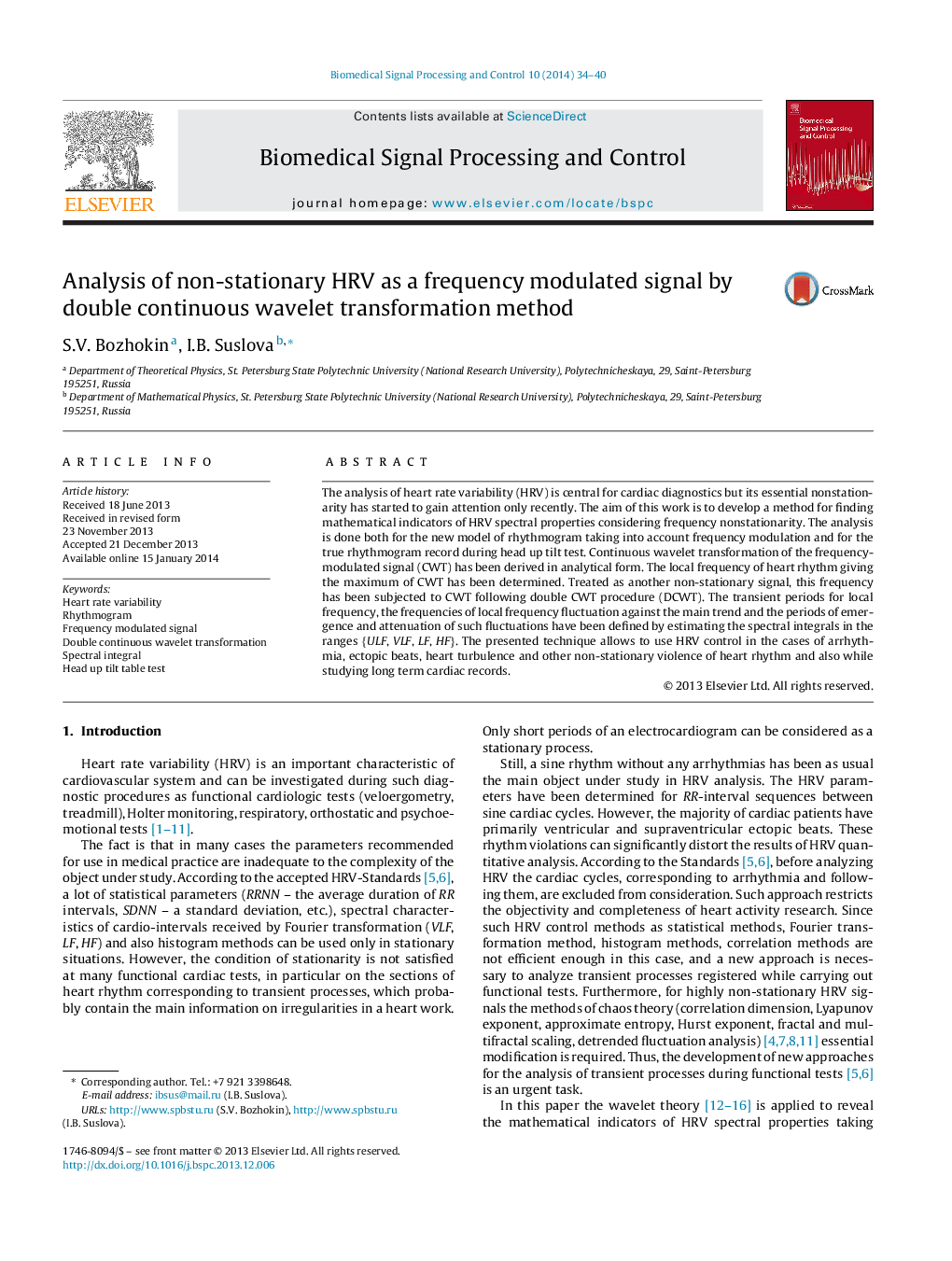| Article ID | Journal | Published Year | Pages | File Type |
|---|---|---|---|---|
| 558787 | Biomedical Signal Processing and Control | 2014 | 7 Pages |
•We propose a new model of non-stationary rhythmogram as a frequency modulated signal.•Double continuous wavelet transformation is performed to analyze non-stationary HRV.•Various scenarios of oscillation rearrangement are studied for frequency modulated rhythmogram signal.•The transient periods and other spectral characteristics are calculated basing on head up tilt test real records.
The analysis of heart rate variability (HRV) is central for cardiac diagnostics but its essential nonstationarity has started to gain attention only recently. The aim of this work is to develop a method for finding mathematical indicators of HRV spectral properties considering frequency nonstationarity. The analysis is done both for the new model of rhythmogram taking into account frequency modulation and for the true rhythmogram record during head up tilt test. Continuous wavelet transformation of the frequency-modulated signal (CWT) has been derived in analytical form. The local frequency of heart rhythm giving the maximum of CWT has been determined. Treated as another non-stationary signal, this frequency has been subjected to CWT following double CWT procedure (DCWT). The transient periods for local frequency, the frequencies of local frequency fluctuation against the main trend and the periods of emergence and attenuation of such fluctuations have been defined by estimating the spectral integrals in the ranges {ULF, VLF, LF, HF}. The presented technique allows to use HRV control in the cases of arrhythmia, ectopic beats, heart turbulence and other non-stationary violence of heart rhythm and also while studying long term cardiac records.
